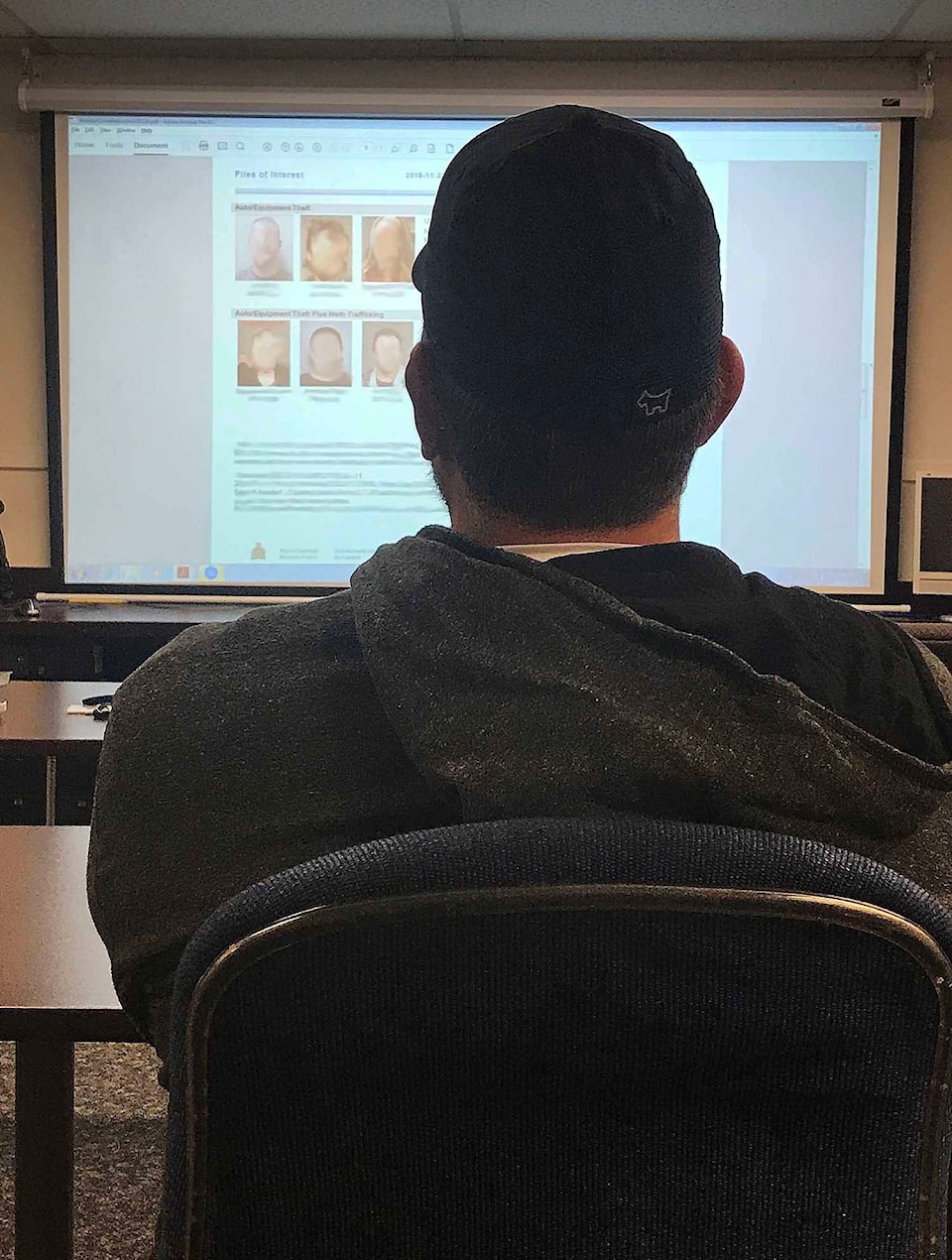Part Two in a five-part series on the inner workings of the Mission RCMP
A lone figure stands before a white screen, waiting.
Representatives from a variety of Mission RCMP departments – general duty, traffic, mental health liaison, the crime reduction unit, serious crime, community policing and more – arrive and take a seat in the board room.
Once everyone is present, the man at the front of the room, Mission RCMP’s intelligence analyst, begins to speak.
This is the Compstat (short for “computer statistics”) meeting, an information-sharing session that occurs every two weeks. This is where the analyst presents his findings and receives input, directly from the street, from the officers in attendance.
READ: Part One - A constant cycle of information
The screen at the front of the room is no longer white; instead, 10 mugshots can be seen as recent statistics and incidents are discussed.
While the information changes from meeting to meeting, this week the number of assaults and auto thefts are on the rise, shoplifting is consistent, and break-and-enters are slightly lower than normal. However, the question isn’t what the numbers are, but why.
The answer may lie in the 10 faces highlighted on the screen.
These are the priority offenders that have been identified and need a closer look by police.
“We’ve had a few people get released. One that I just heard about that we can add in our top 10 has been released on bail,” says one of the officers in attendance.
Police keep a close eye on the court system, checking who is out on bail, who has been paroled and who may be returning to the Mission area.
Known and prolific offenders are always high priorities.
It is noted that one of the people on the screen was recently released to Chilliwack’s Joshua House, a men’s recovery facility. If he remains there, his mugshot will be removed and replaced with another offender. There is an abundance of candidates to choose from.
One by one, the 10 people identified are discussed. Some have curfew restrictions that must be checked, some have specific bail or parole requirements and one has a “no-go order” for the Haven in the Hollow, a temporary overnight housing area in Mission that also provides food and hygiene opportunities.
“He’s already breached the no-go,” says one officer at the meeting. If seen, he will be picked up.
Often it is the same faces that appear on the screen from meeting to meeting as repeat offenders go through the judicial cycle of being picked up, released on bail, then picked up again.
It is a strong source of frustration for the RCMP, but there is nothing they can do about it.
The top three – or most concerning – suspects on the list are identified and placed on the watch report so officers can pay special attention to them.
Hotspots for crime are also identified so police can increase patrols in those areas.
The hotspots include the Mission Motor Inn, the downtown core and the homeless camp near Freshco, which the police visit frequently.
Those three areas have been continually on the police radar.
Sometimes, in order to create a presence, an officer will park his or her vehicle in one of these hotspots and write up a report, rather than doing it in the detachment. It provides a visible presence and deterrent.
The final, and perhaps most significant, item at this week’s Compstat meeting is a discussion on a dial-a-dope operation in Mission.
Surveillance teams have identified two different vehicles involved in suspicious activities, including short stops and quick meets with a variety of different people. They have seen a number of drug transactions in a variety of different settings.
Both cars identified have links to multiple drug-trafficking charges.
“It spiderwebs out to a lot of suspicious activity and links to drug trafficking,” the analyst says.
It’s called a “dial-a-dope” because deals are usually made between the seller and the buyer by phone or text.
There is a hierarchy to the system. The buyer contacts the dealer, meets up with them and exchanges cash, or goods, for the drugs.
The dealer is supplied the drugs by someone known as a “line boss.” The dealer sells all the drugs, brings the money back to the line boss and gets more drugs to sell.
Where the line boss gets the drugs is another question.
The analyst admits that this is an over-simplification of how it works, but it shows the chain of command and how each person separates themselves from the next.
If the police arrest the user, they might get information on the dealer. If the dealer is caught, then maybe they can connect him to the line boss and on it goes.
What the police are trying to accomplish is to connect the drugs all the way to the top.
– NEXT WEEK:
Undercover surveillance

